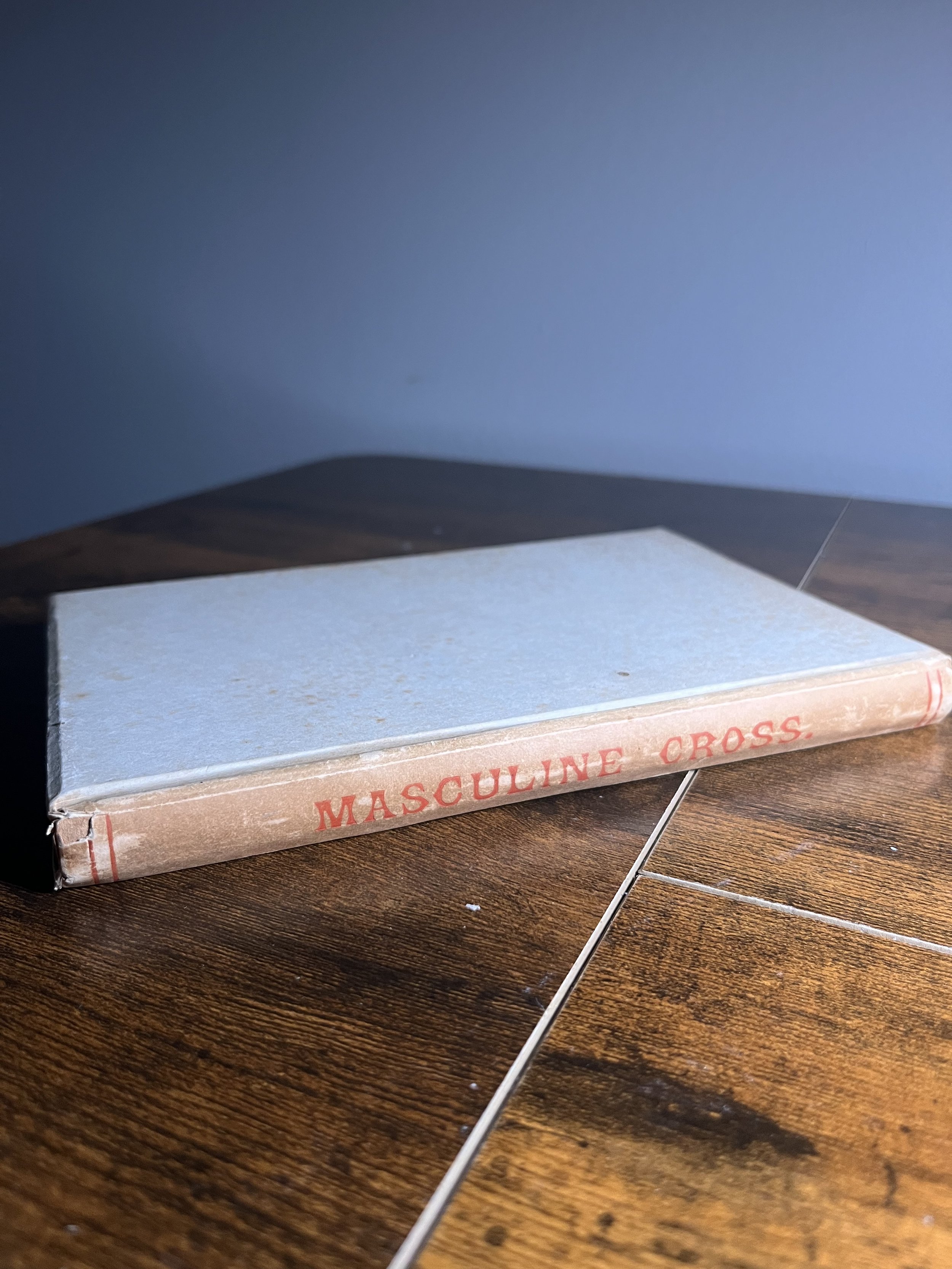Masculine Cross
Masculine Cross By Privately Printed
Publishing: 1904 By Privately Printed
The symbols we know of today did not originate from where we believe they did. Therefore, also meaning that their symbology has a different meaning than our current Epoch understands. Hargrave Jennings privately printed this in-depth work on how the Phallus and Cross symbolize each other and the true symbology behind them both. This is tightly bound copy with foxing to the title page. This title is EXTREMELY SCARCE.
Condition: Very Good / foxing to title, front, and end page / rest of pages are clean and unmarked / binding strong
“There is something unusually remarkable about the popularity of the cross; we can hardly point to a time when, or to a part of the world where, it has not been in favor. It has entered into the constitution of religions of the most opposite character, has been transmitted from one to another, and though originally belonging to the rudest form of pagan idolatry, is now esteemed highly by those who profess to have adopted the loftiest ideal of civilized worship. After mentioning the fact of its popularity in the pagan world, Mr. Maurice remarks: “Let not the piety of the Catholic Christian be offended at the preceding assertion, that the cross was one of the most usual symbols among the hieroglyphics of Egypt and India. Equally honored in the Gentile and Christian world, this emblem of universal nature—of that world to whose four quarters its diverging radii pointed—decorated the hands of most of the sculptured images in the former country, and in the latter stamped its form upon the most majestic shrines of their deities.”.” - Masculine Cross
Masculine Cross By Privately Printed
Publishing: 1904 By Privately Printed
The symbols we know of today did not originate from where we believe they did. Therefore, also meaning that their symbology has a different meaning than our current Epoch understands. Hargrave Jennings privately printed this in-depth work on how the Phallus and Cross symbolize each other and the true symbology behind them both. This is tightly bound copy with foxing to the title page. This title is EXTREMELY SCARCE.
Condition: Very Good / foxing to title, front, and end page / rest of pages are clean and unmarked / binding strong
“There is something unusually remarkable about the popularity of the cross; we can hardly point to a time when, or to a part of the world where, it has not been in favor. It has entered into the constitution of religions of the most opposite character, has been transmitted from one to another, and though originally belonging to the rudest form of pagan idolatry, is now esteemed highly by those who profess to have adopted the loftiest ideal of civilized worship. After mentioning the fact of its popularity in the pagan world, Mr. Maurice remarks: “Let not the piety of the Catholic Christian be offended at the preceding assertion, that the cross was one of the most usual symbols among the hieroglyphics of Egypt and India. Equally honored in the Gentile and Christian world, this emblem of universal nature—of that world to whose four quarters its diverging radii pointed—decorated the hands of most of the sculptured images in the former country, and in the latter stamped its form upon the most majestic shrines of their deities.”.” - Masculine Cross
Masculine Cross By Privately Printed
Publishing: 1904 By Privately Printed
The symbols we know of today did not originate from where we believe they did. Therefore, also meaning that their symbology has a different meaning than our current Epoch understands. Hargrave Jennings privately printed this in-depth work on how the Phallus and Cross symbolize each other and the true symbology behind them both. This is tightly bound copy with foxing to the title page. This title is EXTREMELY SCARCE.
Condition: Very Good / foxing to title, front, and end page / rest of pages are clean and unmarked / binding strong
“There is something unusually remarkable about the popularity of the cross; we can hardly point to a time when, or to a part of the world where, it has not been in favor. It has entered into the constitution of religions of the most opposite character, has been transmitted from one to another, and though originally belonging to the rudest form of pagan idolatry, is now esteemed highly by those who profess to have adopted the loftiest ideal of civilized worship. After mentioning the fact of its popularity in the pagan world, Mr. Maurice remarks: “Let not the piety of the Catholic Christian be offended at the preceding assertion, that the cross was one of the most usual symbols among the hieroglyphics of Egypt and India. Equally honored in the Gentile and Christian world, this emblem of universal nature—of that world to whose four quarters its diverging radii pointed—decorated the hands of most of the sculptured images in the former country, and in the latter stamped its form upon the most majestic shrines of their deities.”.” - Masculine Cross






